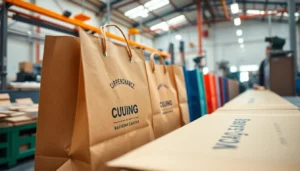Understanding Baby Weaning Foods and Their Benefits
Introducing solid foods to a infant’s diet is a pivotal milestone that marks the beginning of their journey towards independence in eating and nutrition. Known as baby weaning, this transition involves shifting from exclusive breastfeeding or formula feeding to include age-appropriate, nutritious solids. One of the key aspects of successful weaning is choosing the right foods that promote health, safety, and developmental progress.
Baby weaning foods encompass a variety of options, from pureed fruits and vegetables to specially formulated baby snacks and finger foods. These foods are designed to meet the unique nutritional requirements of infants, supporting growth, immune development, and cognitive function. For parents and caregivers, understanding what constitutes quality baby weaning foods is essential for fostering healthy habits early on.
To explore the latest insights and options, visit Baby weaning foods. Incorporating high-quality, Made in Italy products ensures safety, flavor, and nutritional integrity, aligning with cultural culinary traditions and standards of excellence.
Selecting Nutritious and Safe Baby Weaning Foods
Ingredients to Prioritize for Balanced Nutrition
When selecting baby weaning foods, it is critical to prioritize ingredients that provide a balanced blend of macronutrients—proteins, carbohydrates, and healthy fats—as well as micronutrients like iron, calcium, zinc, and vitamins. Organic fruits and vegetables, rich in antioxidants and fiber, should form the foundation of a healthy diet. Incorporating quality grains, such as organic pasta and cereals, offers energy and supports digestive health.
Moreover, plant-based proteins like lentils and chickpeas, and carefully sourced lean meats or fish, contribute to muscular development and overall growth. Carefully prepared, these ingredients ensure nutritional adequacy while being gentle on delicate digestion.
Certifications and Quality Indicators
Ensuring the safety and quality of baby foods relies heavily on certifications and quality indicators. Look for products that comply with strict standards such as ISO certifications, organic labels, and specific baby-food safety certifications, which guarantee rigorous quality control. For instance, products made and tested in Italy often adhere to comprehensive regulations that ensure safety, purity, and traceability.
Labels indicating the absence of BPA, phthalates, added sugars, and preservatives are essential, as these substances can negatively impact development. Choosing foods with transparent sourcing and clear ingredient lists enhances trust and safety.
Avoiding Common Allergens and Harmful Substances
Infant sensitivities require careful attention to potential allergens such as nuts, eggs, soy, and dairy. Introducing these gradually and monitoring reactions helps identify sensitivities early. Simultaneously, avoiding artificial additives, preservatives, and flavorings reduces exposure to harmful substances.
Opt for minimally processed foods, preferably certified organic or with clear control standards, to safeguard your child’s health and promote allergen avoidance policies effectively.
Integrating Baby Weaning Foods into Daily Routines
Timing and Portion Strategies
Timing is crucial when it comes to baby weaning. Most infants are ready to start solids around six months of age, but individual cues such as mouthing, sitting with support, and showing interest in foods should guide initiation. Small, manageable portions—such as a few teaspoons to a few tablespoons—are ideal initially and can be gradually increased as your child develops.
Structured meal times help establish routines, making mealtime predictable and less stressful. Incorporating these foods three to four times a day, aligned with breastfeeding or formula feeding schedules, ensures consistent nutrient intake.
Using Silicone and Safe Utensils for Feeding
Feeding utensils made from certified food-grade silicone and other safe materials are essential for promoting independence and safety. Silicone plates with multiple compartments, such as the Puppy Plate or the Rainbow BabyBoo design, are designed to prevent spills and encourage self-feeding. Ventouse (suction) bowls and ergonomic utensils help infants grasp and manipulate food more effectively, fostering motor skills.
These accessories also minimize mess and maintain hygiene, making cleaning easier and hygienic storage more achievable—factors that are particularly important during busy routines.
Tips for Encouraging Self-Feeding and Developing Skills
- Offer finger foods and small bites that are easy for little hands to grasp, such as soft fruits or baked vegetable sticks.
- Model desired behaviors by self-feeding during meal times, encouraging your infant to imitate.
- Use positive reinforcement to motivate exploration and new textures, helping develop oral-motor skills.
- Introduce varied textures and flavors to stimulate sensory development and expand acceptance of diverse foods.
- Patience is key—allow your child time to explore and master feeding skills without pressure.
Innovative Baby Weaning Foods and Accessories
Latest Trends in Pediatric Nutrition
The pediatric nutrition landscape continues evolving with increasingly innovative, nutrient-dense options. Trends include organic, non-GMO ingredients, superfood additives like chia seeds or goji berries, and personalized meal plans based on dietary needs or preferences. The emphasis remains on natural, minimally processed foods with vibrant flavors that appeal to growing taste buds.
Role of Silicone Dinnerware and Accessories
Silicone dinnerware plays a vital role in fostering independence, safety, and hygiene. Products such as SoftEdge Plates with a combination of elegance and practicality or Ciotola con Ventosa bowls ensure stability and ease of use, reducing the risk of spills and accidents. The durability, heat resistance, and non-toxic qualities of certified silicone make these accessories ideal companions during early feeding stages.
Suggestions for Combining Homemade and Store-Bought Foods
An effective weaning strategy integrates homemade purees or finger foods with high-quality store-bought options. This approach offers variety, convenience, and nutritional assurance. Homemade foods can be tailored to meet specific dietary needs, while store-bought products like organic pasta or snacks provide consistency and time-saving benefits. Always prioritize products with transparent ingredients, certifications, and made in Italy standards to ensure optimal safety and flavor.
Monitoring Progress and Adjusting Weaning Plans
Signs of Readiness and Dietary Preferences
Monitoring your child’s developmental signs—such as sitting unassisted, showing interest in food, and increased appetite—is essential for assessing readiness. Keep track of preferences and reactions to different textures and flavors to personalize the approach, making mealtimes engaging and positive.
Tracking Growth and Nutritional Intake
Regular pediatric check-ups help track growth metrics such as weight, length, and head circumference. Keeping a food journal can assist in monitoring nutritional intake, ensuring adequacy, and identifying gaps or intolerances early. Use growth charts and nutritional guidelines to adapt the diet as needed.
Consulting Pediatric Experts for Customized Plans
Professional guidance from pediatricians or nutritionists can provide tailored recommendations aligning with your child’s developmental needs. They can assist in designing comprehensive weaning plans that consider allergies, feeding difficulties, or specific health concerns, ensuring a safe and nourishing transition.








